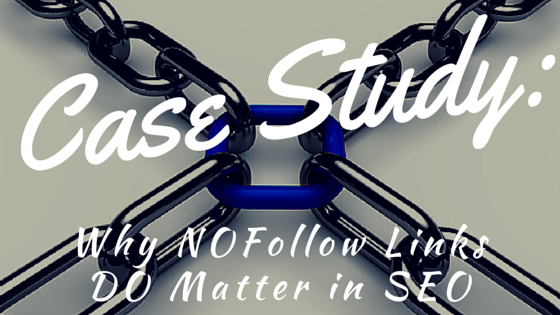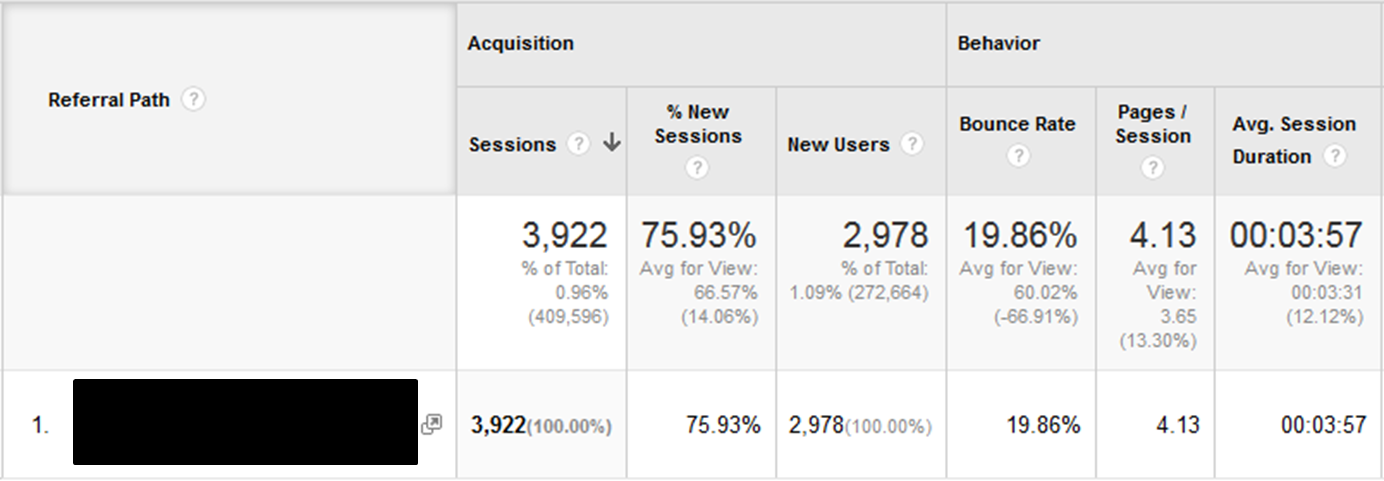The Story of how a Nofollow Link Building Strategy Drove Page 1 Rankings and Increased Organic Traffic 288% in 1.5 Years

If you work in SEO – heck, even if you don’t, you might be familiar with the terms nofollow and dofollow in regards to backlinks. It is greatly debated within the industry whether nofollow links carry any weight or even matter at all. So do nofollow links help rankings for SEO? Well I am here to tell you today that NOfollow links DO matter in the world of SEO and link building. The stats and results provided below will show you how we were able to increase our clients’ organic traffic by 288% in about a year and a half, WITH 89% BEING NOFOLLOW LINKS! There is a lot to discuss so let’s get to it.
What Are Nofollow & Dofollow Links?
Let’s begin with actually explaining what each of these terms mean and what the differences are between them.
- Dofollow: These links tell search engines to “follow” them and pass link juice to help improve a sites ranking.
- Nofollow: These links tell search engines the exact opposite of dofollow and that is to not “follow” them and that the hyperlink should not influence the ranking of the link’s target URL. Google says “In general, we don’t follow them. This means that Google does not transfer PageRank or anchor text across these links. Essentially, using nofollow causes us to drop the target links from our overall graph of the web”
With this being said, Google says a lot of things that aren’t always true. Many people in the SEO industry believe they do have value and pass some link juice, us included, but there are also a great deal of people who don’t share our beliefs, which is why this is such a controversial topic. Granted, they don’t pass as much juice as dofollow links, but that’s not to say that they aren’t important and valuable in many other ways. There are plenty of benefits from acquiring nofollow links along with dofollows.
The Benefits of Nofollow Links
As I mentioned above, nofollow links do have value in many of their own ways and should not be shied away from. We all know how hard good, white-hat link building has become over the last 5-10 years, and rightfully so. So passing up a good, quality, RELEVANT link just because it’s nofollowed doesn’t make much sense and here are some of the reasons why:
- Referral traffic: A well placed nofollow link, or any link for that matter, has GREAT potential for referral traffic, which leads to…
- Leads: If you get a link that drives tons of traffic to your site then your leads will subsequently increase too, which leads to…
- Revenue: Depending on if your Conversion Rate Optimization (CRO) is up to snuff, all the extra traffic and increased leads should then convert into more paying customers
- Organic Growth: This one could be up for debate, but that all depends what side of the argument you’re on. I firmly believe that Google does follow nofollow links, at least somewhat. This would make them one of their MANY ranking factors for organic growth. There isn’t ONE golden ranking factor that will shoot you to the top of page 1, but when you put all of them together is when you really start seeing some great improvements. If you were wondering about any of these ranking factors that Google looks at, here’s an amazing list of all 200 of them that Brian Dean @ Backlinko put together, kudos on all of that work Brian!
- Diversify Your Backlink Portfolio: Adding a little diversification is only going to help you in the long run. You don’t want to have a backlink profile with all of the same kind of dofollow links from only a few domains. If you do, chances are Google will notice and might think it’s a bit unnatural, and you don’t want to get on their bad side. Just like your financial portfolio, diversification is key.
So now I ask you, if you are getting increases in traffic, leads, and hopefully customers, as well as seeing organic growth from rankings and traffic all from some nofollow links, then why is there so much hatred towards them? If you are improving traffic, rankings, and profit, then isn’t that the main goal of any business? When you have a well-rounded campaign in motion that is hitting on all cylinders, passing up a link because it’s nofollow (as long as it’s a good, QUALITY opportunity) isn’t smart, and here are some stats to prove it to you.
The Proof is in The Pudding

One of the clients I manage has seen AMAZING growth over the last year and a half and the majority of links we have gotten have been nofollow, take a look for yourself:
- Links (all in the timeframe of Jan 2014 – May 2015)
- 99 total links
- 88 of which are nofollow
- 11 are dofollow
- Which means 89% of all links are nofollow
- Google Rankings
- They currently rank #1 for their main keyword which is very competitive (2,000 Monthly Searches)
- They currently rank #2 for an even more competitive keywords (8,100 Monthly Searches)
- 3 of their other targeted keywords are moving up page 2 & 1, a lot of which are competitive as well
- None of these keywords were ranked when we started working with this client so to see them go from nowhere to the top in such a competitive industry is pretty awesome
- Organic Traffic
- Has grown 288% from January 2014 – May 2015
- That chart above shows beautiful, sustainable growth
- Organic traffic was at about 1,700 sessions in January 2014
- As of May 2015, it is up to about 6,500 sessions
- Has grown 288% from January 2014 – May 2015
- Referral Traffic
- ONE nofollow link drove 3,922 referrals from January 17th 2014 – October 20th 2014
- ONE nofollow link drove 3,922 referrals from January 17th 2014 – October 20th 2014

If you are wondering why the statistics are only through October 2014, it is because around that time, the website that the link resided on shifted from being a complementary service for our client to becoming a direct competitor, so naturally they removed our link. This was a bummer, but I have one more thing to show you that is pretty interesting.

The chart above shows our clients referral traffic in orange and direct traffic in blue. The point where these two lines intersect is pretty much the EXACT date our links were removed. Now tracking direct traffic can be tricky, but I think it’s safe to assume that the spike in direct traffic is very closely connected to our links being removed, and I feel this way because of a few reasons:
- The website we had our link on was EXTREMELY authoritative and relevant to our client’s industry
- The hyperlink was removed, however, the brand name and value prop was still listed so people still saw the information, typed it into their browser, and BOOM, there’s your direct traffic increase. This point alone can tangent off into its own blog post around brand mentions and the value it contains, but we will save that for another day.
Conclusion
I have been in the industry and actively doing link building for close to 20 years now and I like to look at dofollow and nofollow links as having the same value. As long as you are building links the right way, ensuring that they are relevant (most important factor, in my opinion), helpful, and natural, then why would you pass one up? I always like to revert to an awesome quote I read from the great Eric Ward when I first started, and it still sticks with me to this day: “Ask yourself, would you want this link if there were no Google?”
That quote embodies the true meaning of link building to me, if it makes sense, is relevant, and would be something that someone reading the page or article might find helpful, then that is a link you should aim for, and not worry about whether or not it’s nofollow or dofollow.













